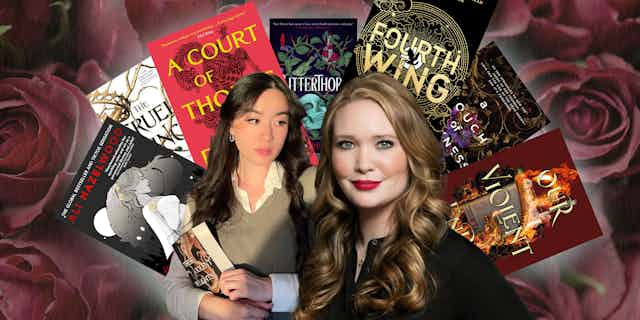In 2015, Sarah J. Maas published A Court of Thorns and Roses, in which teen heroine Feyre is swept away from her human life into a world of magical fairy court intrigue and romance. The novel, which was marketed as young adult, was very popular. It hit, among others, the New York Times bestseller list.
However, the short-term success of the book pales in comparison to the longer-term success of the (five-book) series it belongs to. Maas has now sold 40 million copies of her books worldwide (as of February 2024).
A Court of Thorns and Roses (referred to by fans as ACOTAR) was already popular on bookish social media, but it hit truly extraordinary heights with the emergence of BookTok – the reader-generated, bookish arm of the social media platform TikTok. Almost as soon as BookTok became a phenomenon – in around 2020 – so too did A Court of Thorns and Roses.

As with the works of fellow BookTok sensation Colleen Hoover, A Court of Thorns and Roses’ popularity drove not just book sales, but conversations. Around this book and others like it, a new term crystallised: romantasy.
Romantasy is currently experiencing extraordinary visibility both on digital platforms and in local bookstores.
While concrete data are scarce, there is little doubt it is selling in remarkable numbers, both in Australia and internationally.
Read more: What is BookTok, and how is it influencing what Australian teenagers read?
The marriage of romance and fantasy
To be clear: romance and fantasy are not new bedfellows – they have had a long and healthy relationship. The two genres have been in conversation since Guinevere first saw Lancelot.
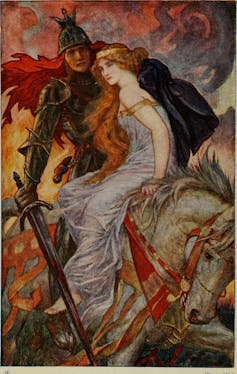
Many authors have made successful careers by exploring romantic tropes in fantasy fiction, or fantastical elements in romance fiction. In the 1970s, Anne Rice famously did the former with her Vampire Chronicles, starting with Interview with the Vampire, adapted into a film in 1994 and a TV series in 2022.
Even earlier than this, Anne McCaffrey infused romance into her fantasy series Dragonriders of Pern, where humans and dragons form lifelong bonds. The first book in this series, Dragonflight, came out in 1967, and featured a strong romantic plot between two dragonriders.
The latter half of the 20th century also gave rise to a boom in two frequently overlapping subgenres: paranormal romance and urban fantasy, where fantastical characters and/or concepts are placed in a real-world setting.
Authors such as Laurell K. Hamilton, author of the series Anita Blake, Vampire Hunter, and Charlaine Harris, whose Sookie Stackhouse series was filmed as the TV series True Blood, achieved enormous success.
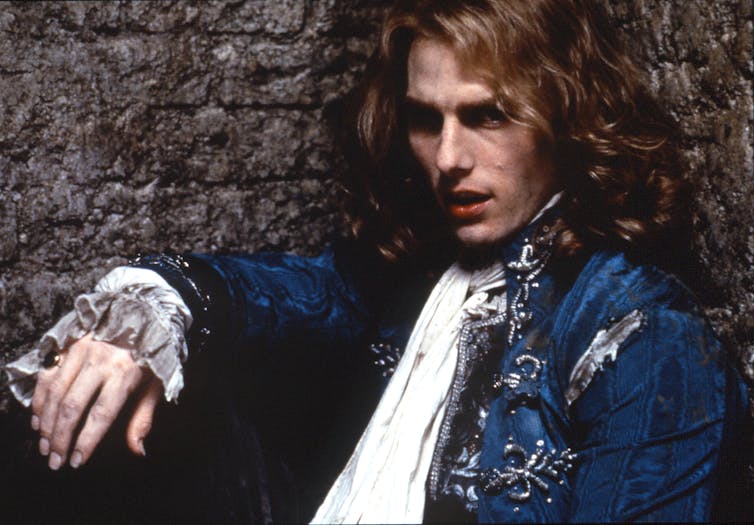
This was mirrored in Australia by Keri Arthur, whose Riley Jenson Guardian series with its half-vampire, half-werewolf heroine achieved international success; and in New Zealand, by Nalini Singh, best known for her Psy/Changeling series.
Similarly, timeslip romance – where magical means see characters travel to the past – became very popular in the 1990s, with books such as Jude Deveraux’s A Knight in Shining Armour (1989) and Diana Gabaldon’s Outlander (1991).
Different terms have historically been used to distinguish different versions of the romance–fantasy cocktail. “Romantic fantasy” relied more heavily on fantasy genre conventions, but included strong romantic subplots, such as in Jacqueline Carey’s Kushiel’s Dart (2001) and its sequels, about a courtesan spy in a quasi-medieval Europe.
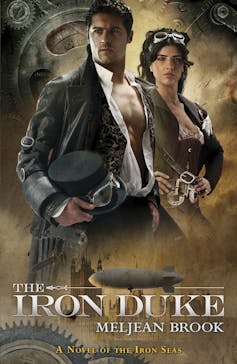
“Fantasy romance”, on the other hand, was more wedded to the structure of the romance novel, often including the romantic happy ending, but it included fantastical elements and/or settings. Examples of this include The Iron Duke by Meljean Brook (2010), a Victorian London steampunk adventure involving pirates, zombies and nanotechnology.
Like other subgenres of both romance and fantasy, romantic fantasy and fantasy romance have ebbed and flowed in terms of popularity. In young adult fiction, though, their marriage has remained stable.
Perhaps the most famous 21st-century title is Stephenie Meyer’s Twilight (from 2005), the first in a paranormal romance series featuring vampires and werewolves. But there are many others: Richelle Mead’s Vampire Academy series (from 2007) and Cassandra Clare’s Mortal Instruments series (from 2007), both about students and teachers at magical boarding schools.
One of the most beloved fantasy fiction tropes – as with much literature written for young adults – is coming-of-age, where protagonists find their own identity while also undertaking various quests. This means protagonists can be quite young, and the line between what is published and marketed as young adult versus adult fantasy is often blurred.
The birth of romantasy
“Romantasy”, therefore, is not new – but the term is.
New life is being breathed into older titles, as BookTokers read them through this romantastical lens. For instance, Holly Black’s The Cruel Prince (2018), about a mortal girl caught up in a web of faerie intrigue, and Tahereh Mafi’s Shatter Me (2011), about a heroine whose touch can kill. There are 82,700 posts on TikTok tagged #hollyblack, and 55,800 tagged #taherehmafi.
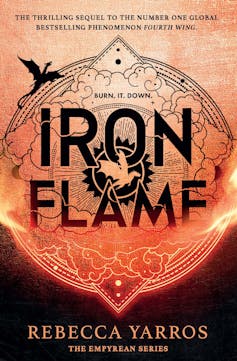
The next generation of authors are taking advantage of romantasy’s popularity, using the term (and related tropes) as hooks. Rebecca Yarros’ Fourth Wing and Iron Flame, both released in 2023, are the most visible. Both sit well within the top-selling titles in Australia for 2023 and Fourth Wing won Dymocks Book of the Year). Its heroine, Violet, learns to survive (and ride dragons) while falling in love with her sworn enemy, Xaden, at a magical military academy.
Authors like Rebecca Ross with her enemies-to-lovers young adult fantasy Divine Rivals (2023) and its sequel Ruthless Vows (2023) are also enjoying great success.
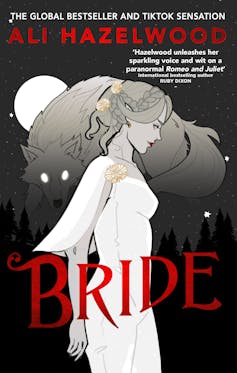
Authors whose slightly older books have been rebranded as romantasy have likewise benefited from increased visibility, like Chloe Gong’s These Violent Delights (2020), a reimagination of Romeo and Juliet set in a magic-laden 1920s Shanghai.
Authors from other genres are entering this space too, like romantic comedy author Ali Hazelwood (best known for The Love Hypothesis), whose usual niche is women in science finding love. Her latest novel is a vampire-werewolf romance, Bride (2024).
Like all publishing trends, the romantasy skyrocket is bound to fall to earth eventually. However, the long history of the marriage between romance and fantasy suggests this union will likely continue to bear fruit for a long time – in one form or another.

